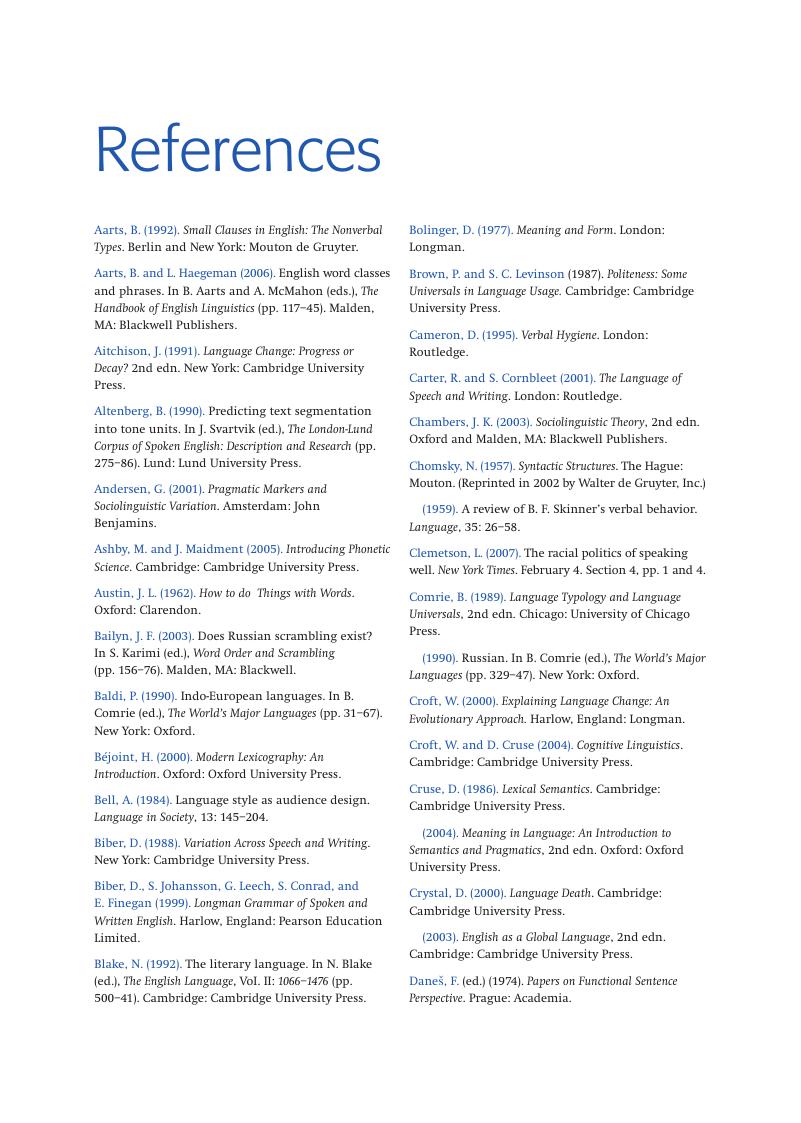Book contents
- Frontmatter
- Contents
- Preface
- 1 The study of language
- 2 The development of English
- 3 The social context of English
- 4 The structure of English texts
- 5 English syntax
- 6 English words: Structure and meaning
- 7 The sounds of English
- Appendix: Linguistic corpora consulted
- Glossary
- Answers to self-study activities
- References
- Index
- References
References
Published online by Cambridge University Press: 05 June 2012
- Frontmatter
- Contents
- Preface
- 1 The study of language
- 2 The development of English
- 3 The social context of English
- 4 The structure of English texts
- 5 English syntax
- 6 English words: Structure and meaning
- 7 The sounds of English
- Appendix: Linguistic corpora consulted
- Glossary
- Answers to self-study activities
- References
- Index
- References
Summary

- Type
- Chapter
- Information
- Introducing English Linguistics , pp. 247 - 252Publisher: Cambridge University PressPrint publication year: 2009



